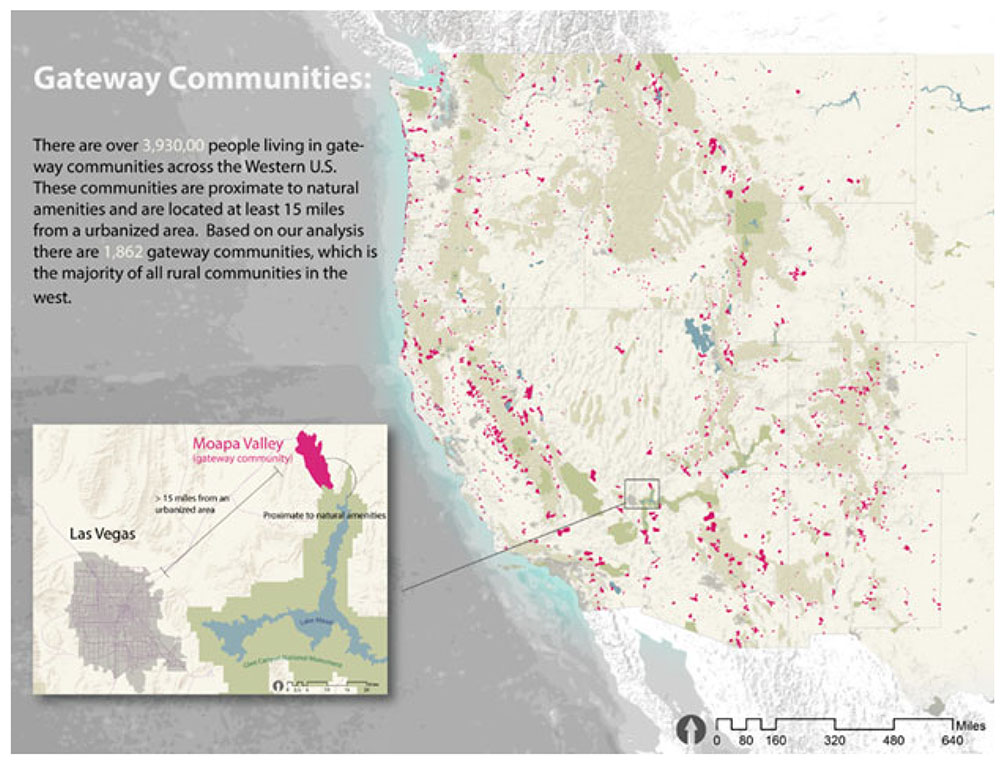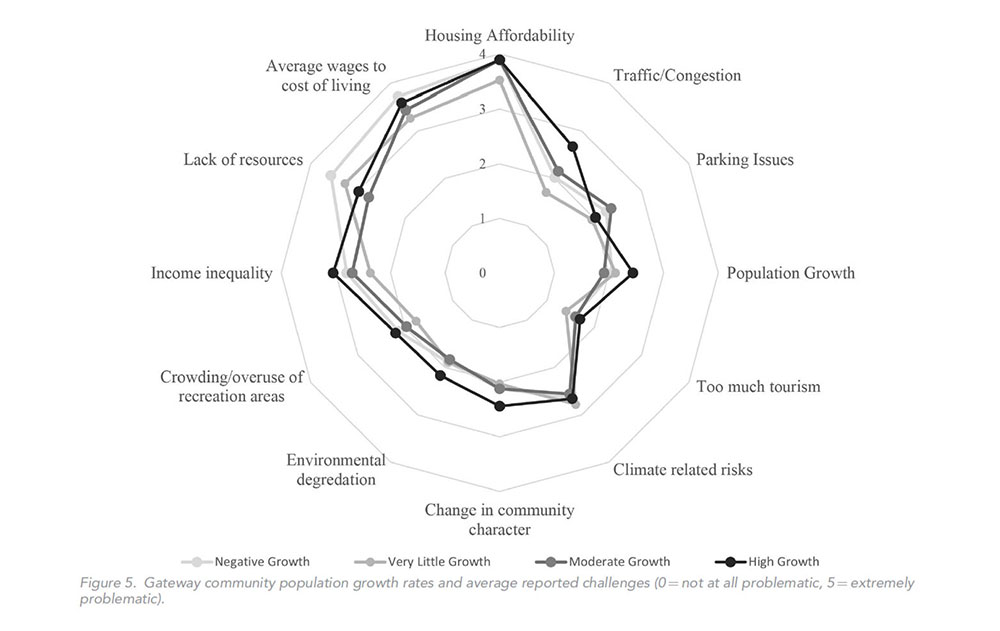Uncovering JAPA
Big Little Towns: The Growing Reality of Western Gateway Communities

Skiing in Telluride, Colorado. Vacationing in Aspen, Colorado. Attending exclusive music events in Jackson, Wyoming. In recent years, some western gateway communities have surged in popularity, becoming both a destination for tourists and a rural respite for people seeking to escape urban areas. However, these guests and amenity migrants do not come alone. Instead, they bring with them challenges often associated with cities: limited affordable housing, traffic/congestion, and strained public resources. The result is a planning paradox — how can a community have few residents yet struggle with "big city problems" and have a bustling economy but little revenue?
Western Gateway Towns Face Urban Challenges
"In Planning and Development Challenges in Western Gateway Communities", published in the Journal of the American Planning Association (Vol. 87, No. 1), authors Philip Stoker, Danya Rumore, Lindsey Romaniello, and Zacharia Levine recognize few resources address the planning challenges associated with this duality. Likewise, little exists to prepare others for this possible future. Results from interviews with 33 public officials and a survey of more than 300 representatives from 264 western gateway communities suggest that more than half of these communities are, or are worried, about losing their small-town feel and community character. For many of these communities, some of which have limited resources and few if any full-time public officials to plan for the burgeoning populations, this seems to be a foregone conclusion.

Figure 1. Gateway Communities map
Changes in community identity are also accompanied by changes in the community's make-up and physical landscape. A majority of respondents (82.7 percent) reported housing affordability being moderately to extremely problematic for their community. Almost 40 percent stated that seasonal residents occupy at least 25 percent of their housing. Thus, confronted by dwindling supply and rising costs of housing as well as stagnant wages, one may question if Western gateway communities soon will find themselves unable to house their long-time residents. While communities differed in terms of much growth they had experienced over the last ten years, they shared many similar problems.

Figure 5. Gateway community population growth rates and average reported challenges.
Challenges in Planning for Western Gateway Communities
To solve these challenges, the authors discover some communities have adopted policies found in large cities. More than a quarter of respondents indicated that their cities were exploring accessory dwelling units (38.1 percent) or relaxing zoning and land use regulations (25.8 percent). Nearly a fifth (19.8 percent) reported converting public land into affordable housing. Yet, by increasing development and ancillary infrastructure — public transportation, parking, etc., — I question if these otherwise logical planning interventions may put further pressure on communities' amenities and reshape how residents view their once "small town" communities.
Ultimately, it stands that local planning efforts alone will be insufficient to address the complexity of these issues. The authors and their respondents thus assert regional planning will allow for more effective intervention. However, considering the COVID-19 pandemic and its enduring ramifications, this type of collaboration becomes an even greater imperative. With remote work more available, these communities already have been inundated with visitors threatening not only community capacity but population health as well. As we emerge from the pandemic, when the importance of place and our social relationships in cities have been put into perspective, planners must commit themselves to preserving these same things for Western gateway communities.
Top image: RiverNorthPhotography/iStock/gettyimages.com


